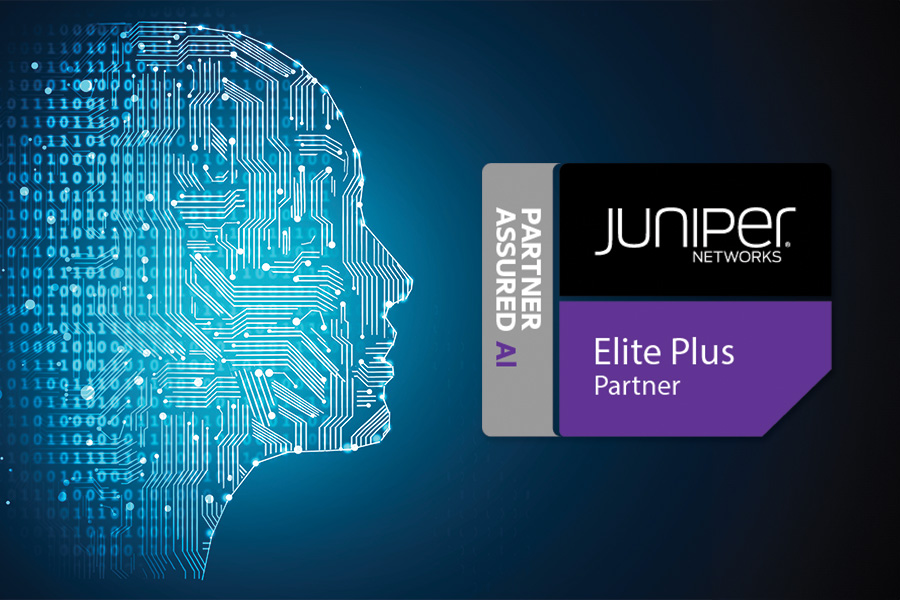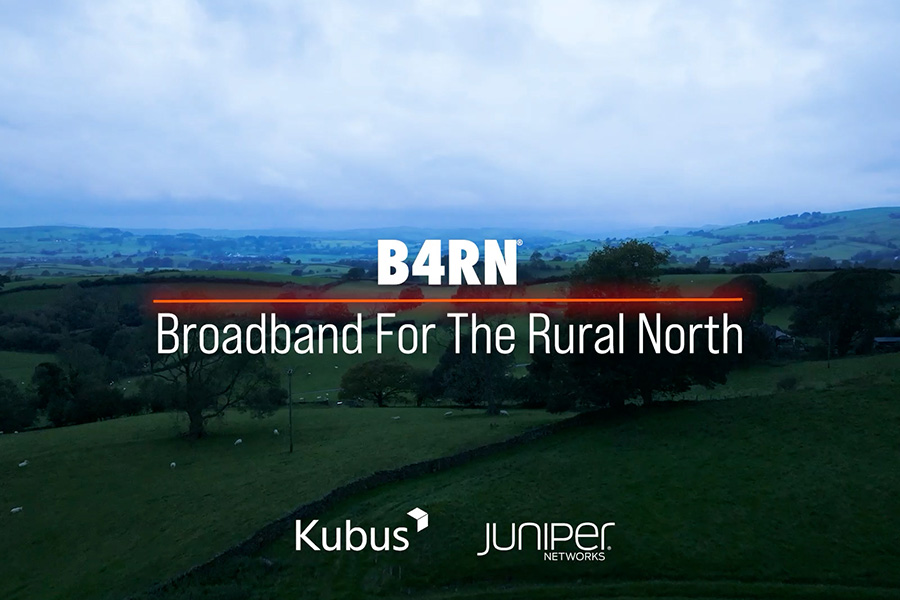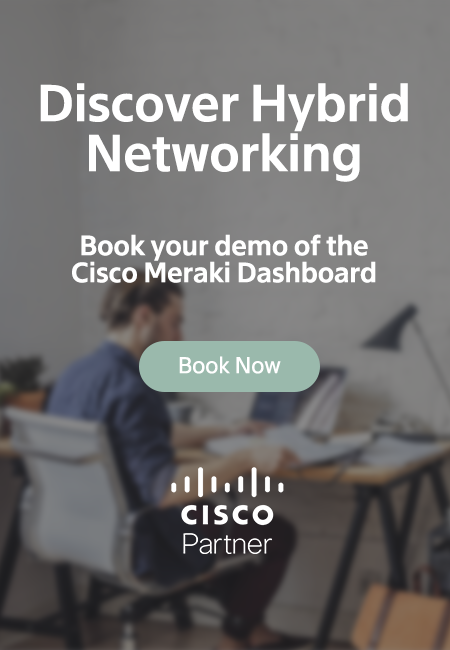Introducing the Kubus Networking Kube
In the digital age, where connectivity is the lifeblood of modern businesses and organisations, the significance of networking equipment cannot be overstated. Behind every seamless video call, every online transaction, and every data transfer should lay a robust infrastructure powered by cutting-edge networking equipment.
Providing the necessary hardware and functionality to establish reliable, secure, and efficient connections is crucial to enabling your employees to do what they do best. From routers and switches to optical equipment and SD-WAN technology, each component plays a critical role in the overall performance of your business’s network. Without robust networking equipment, communication, collaboration, and data exchange would be severely hampered.
It’s also key that when your business changes and evolves, your network can scale and adapt to support it. Whether it be to accommodate additional users, devices, or data traffic, performance levels should be consistent – even during peak usage periods. Your network should enable your business to future-proof it’s operations and position itself for long-term success.
We know that finding the most compelling Networking technologies for your business can be a complex task. That’s why we decided to simplify and condense our Networking offerings into 6 faces of the new Kubus Networking Kube. These faces include Automation & Insights, Connectivity & Visibility, Hybrid Working, Intelligent Wi-Fi, Routing & Switching, and Secure SD-WAN.
We have the tech and know-how to ensure that your networking equipment won’t let you down.
Get in touch – we’re ready to help.

We’re Juniper Partner Assured!
What is Juniper Partner Assured?
Juniper hand-selects the partners they feel have continually elevated their customers to new heights. In Juniper’s eyes, these partners have shown exceptional knowledge, experience, and commitment as a partner.
Through our continued investment in and with Juniper over the past several years, we are proud to announce that we are Juniper’s first partner to gain the Partner Assured designation.
A word from Jim Banbrook (Sales & Marketing Director) on our recent designation:
We are very proud to announce that we have received Partner Assured designation with Juniper – a testament to all the continued hard work from the whole team here at Kubus.
What does it mean for our customers?
Some of the benefits for you as our customer:
- Elevated Investment in Juniper Practice – Juniper supports us with industry-specific training to enrich our solution knowledge through continual collaborative planning.
- Dedicated to Your Long-term Success – As you grow, we will too – constantly striving to serve you better.
- Ready for Anything – Extensive vertical and technical expertise, all supported by a robust Juniper go-to-market engine.
- Complete Lifecycle Management – With comprehensive skill sets across design, deployment, and operational delivery, we can deliver full lifecycle capabilities and management.
- Independently Validated – Our skills, solutions, and approach are certified by an external verification body for superior quality and reliability.
- Making Every Connection Count – We are continually strengthening our AI and technology expertise through increased resources to deliver speed, scale, and value directly to you.
We are championed, verified, and vouched for as having superior capabilities in managing the complete Juniper lifecycle. If you want to find out how we can help your business with finding the right Juniper tech for its needs, get in touch.

B4RN – Better Connected
Broadband for the Rural North (B4RN) is a community-led project that has been helping bring hyper speed broadband to rural areas for 12 years.
When B4RN approached us for their recent network rollout, we wanted to ensure that whatever solution we provided for them served the most compelling case. To do this, we had our sales manager, Alex Hammond, work closely with B4RN to evaluate all vendors in the market.
Working as a team, we didn’t want to just provide connectivity to B4RN’s customers – we wanted to provide the best-in-class internet that they could possibly have, powered by the best technology on the market.
To hear how this impacted B4RN and the communities they provide internet for, watch and enjoy the video below.
Update: 13th Feb 2024
Juniper networks press release: B4RN Brings High-Speed Fiber Internet to over 13,000 Customers in Northern England with Juniper Networks’ Core Network Technology

Introducing the Kubus Compute & Store Kube
Compute & Store. It’s the part of your business’ network infrastructure that manipulates data and stores the results. Whether this is being done at a small scale such as office spreadsheets and warehouse record-keeping, or for Big Data calculations in climate simulations, AI language modelling, or global financial transactions; the fundamental technology requirements remain the same.
Given its highly crucial role, the process of upgrading or acquiring new compute & store technology can be a daunting task – and to make things even more complex, it’s not just the day-to-day hardware that needs to be considered. There really is a lot to think about:
What servers do you need? Plan for how much computational power you need now and in the future.
How much data do you need to store (and immediately access)? Live data that is accessed by users on a regular basis, and predicting how this will expand.
What about archiving data? Backups of inactive data often need to be kept for legal or regulatory reasons.
Have you planned for disaster recovery? Ransomware and cyberattacks can cripple a system and effective disaster recovery planning and systems can help you get back up and running with minimal disruptions.
Do you want your equipment on-premises, off-site, or both? Cloud and hybrid-cloud technologies can offer a different level of platform flexibility – and cost structure – to owned kit.
And of course, don’t forget your users. What tools are you going to provide them with to access these systems?
We understand the complexities of finding and provisioning compute & store systems. It’s for this very reason that we’ve decided to condense the key aspects above into the 6 faces of our new Kubus Compute & Store Kube: Servers, Storage, Backup, Cloud, Disaster Recovery, and End User Devices.
Each face represents technologies and solutions from world-leading compute and store vendors; solutions that we can help select, configure, and implement for your business; helping you keep doing what you do best, whatever calculation that is.
Get in touch – we’re ready to help.

Introducing the Kubus Security Kube
In our 20 years of serving the IT infrastructure industry, we’ve helped everything from startups to FTSE100 businesses find comprehensive solutions that provide the perfect resolution to the boundaries and issues they are facing. Whether it involves network, compute, or security solutions, our strong connections to world-leading tech providers, excellent in-house team of tech experts, and vast distribution network has enabled us to get the job done – fast and effectively.
With this level of experience, we understand how overwhelming it can be for a business when it comes to looking for new tech solutions – particularly when selecting security solutions to protect against the ever-growing threats presented by cyber criminals.
So, we decided to condense our entire security solution catalogue under 6 all-encompassing cybersecurity headers. Advanced Endpoint Protection, Next Gen Firewall, Observability, Physical Security, Privileged Access Management, Remote Worker – these are the 6 pillars that represent the 6 sides of the new Kubus Security Kube.
All 6 pillars are represented by cutting-edge solutions from world-leading cybersecurity technology vendors. Solutions that you can rely on to protect your business from current -and future- threats.
Get in touch – we’ll keep you safe from all sides.

How will AI Change the Future of Networking?
An introduction to AI in networking
Artificial intelligence. A popular conversation topic with plenty of media coverage over the last few years; we are now starting to see AI innovate and change the way things are done in a wide range of industries. From the farming industry utilising AI to gain in-depth analytics, improving crop yield – to governments using it to make data-driven decisions. Many businesses and organisations are finding ways to innovate with this highly valuable and versatile technology.
IT networking can now also benefit.
With the ever-increasing demands that networks are facing, it’s important that businesses find new solutions to ensure that their network infrastructure remains reliable, secure, and agile. If a business’s network goes down, so does their profit. Constant innovation is crucial to stay ahead of the game.
AI is a perfect tool to help with this.
How is AI affecting networking?
By utilising artificial intelligence and machine learning, businesses are offloading low-level tasks, learning more about how their networks are being used, whilst analysing and optimising the performance of their infrastructure.
A key benefit of integrating AI solutions is the opportunity to free up more time for IT teams – allowing them to focus on forward-thinking innovations, finding more ways to optimise the network and its operations. And it won’t be just the IT team that finds and implements new ways to optimise the network; with the right setup, AI-driven infrastructure will find ways to work harder and more efficiently automatically – all thanks to machine learning.
By analysing network patterns and abnormalities, AI can raise the alarm if it detects an anomaly within the network – allowing network admins to identify issues before they become critical problems. This, paired with automatic troubleshooting and self-healing capabilities, enables businesses with AI integrated infrastructure to be confident that their network will remain stable and operational around the clock.
Network security is another critical area that AI can help businesses with. Thanks to machine learning, AI security solutions can learn from previous threats and attacks to help create an autonomous, resilient barrier against future security threats and anomalies.
A more reliable user experience is also made possible thanks to AI. With visibility into the user’s end-to-end experience with the business’s network, AI can identify areas that can be made more efficient, streamlining and optimising the user’s entire interaction; in turn creating a more reliable, predictable experience.
What does AI hold for the future of networking?
As networks develop and become inevitably more complex, AI will become more intelligent and capable to match. With so many IoT devices connecting to networks and transmitting data across them, the magnitude of things that could go wrong increases. AI will be needed to help manage and administer this ever-growing quantity of IoT devices, automating and optimising any would-be hands-on tasks.
In turn, this continued optimisation will free up the IT team, enabling them to spend more time focusing on tasks that will further business goals, rather than menial, every-day tasks; helping the business elevate to higher levels of productivity.
With an increasingly data-driven world fast approaching, industries will need to harness powerful tools such as AI to sift through and make sense of it all. In turn, businesses will be able to make more impactful, data-backed decisions. An investment into AI-based network solutions is one that is certain to pay off.
How can we help you?
With AI becoming such a major driving force for progression in industries far and wide, it’s important to stay ahead of the curve with the latest solutions.
Finding the most effective AI solutions for your network can be an intimidating task, though.
Whether it be orchestrating your entire tech estate from anywhere in the world, attaining advanced insights into how your network is being used, setting up 24/7 AI-based automated network monitoring, or even utilising AI to optimise and improve your customers experience within your establishment from entrance to exit; we can help you find the solution that will provide the best use case for your business.
Get in touch today to speak to one of our experts.


The Hybrid Working Environment
It’s no surprise that remote working has seen a rise in popularity over the past 3 years. Improved productivity, healthier work/life balance, better mental health – just a few benefits that a hybrid-working schedule can offer – and just a few reasons why so many companies have made the shift to providing hybrid-working opportunities.
Employees that work hybrid schedules often find themselves working from various locations. Their own home. The local café. Hotels across the world. A client’s site. For this reason, it’s important that, no matter where they are connecting from, workers can access all the applications and files they need to go abouts their workdays, in a secure, efficient, and effective way.
This may be just the beginning of the hybrid-working revolution, though. With so many benefits for both the employer and employee, many companies have their eyes set on shifting to infrastructure that supports working hybrid. Those that have made the change to hybrid have reaped the rewards of higher talent acquisition, staff retention, and overall improved access to a higher number of potential employees thanks to the removal of geological restrictions.
However, finding the right solution(s) can be a daunting task. With so many different options available to build your hybrid-working suite, it can be difficult to find the best tech that truly suits your business’s specific needs.
The Journey to Hybrid Working
Of course, every company is at a different stage of their hybrid work journey. Comprising of a sample of 1,430 global respondents (representing companies with 250 to 5,000+ employees across 20 industry sectors), Cisco, partnered with IDC, conducted and designed research to fuel key insights into hybrid work initiatives, to construct what Cisco have coined ‘The Hybrid Work Maturity Model’. They found that there are 4 types of organisations:
Hybrid Work Observers (7%): Organisations that are beginning to explore different hybrid-work models but still work mainly within the office.
Hybrid Work Adopters (47%): Organisations that are beginning to invest in technology, enabling them to operate hybrid.
Hybrid Work Champions (38%): Organisations that have introduced hybrid work in specific departments and are seeing improved business outcomes but are yet to introduce hybrid work throughout the whole organisation.
Hybrid Work Innovators (8%): Organisations that have well-established, company-wide hybrid working policies, and have the technology and capabilities to support a hybrid-first strategy.
From Cisco’s findings and evaluation, it’s clear to see that most organisations are yet to fully embrace hybrid working – with many keen to adopt the necessary technology to support their employee’s work from outside the office.
Why is Hybrid Work so important?
Organisations have seen that the shift to remote work not only increases the speed of digital infrastructure and technology solution adoption but also brings people policies and company culture to the forefront. This shared experience across the workforce changes expectations of employees and employers alike. But how can you evolve traditional on-site and off-site work models by designing the work experience around and for the worker, wherever they are?
For any business to meet its primary aim, it must address the three foremost areas of concern: cybersecurity, productivity, and workforce attraction and retention in the face of an ageing workforce during a wildly competitive market.
So, why is having the capability to provide hybrid work to employees so important?
The new generation of workers will be harder to recruit and will expect a hybrid work environment that demands a more efficient, semi-autonomous operating environment. Here are some stats:
- 75% of hybrid of remote workers say their expectations for working flexibly have increased, with 4 out of 10 stating they may leave their job if they’re required to return to the office full-time (Gartner).
- 69% of global CIOs, IT decision-makers and office workers say that the ability to dictate their own working hours directly affects whether they stay at a job; 64% say the ability to work remotely directly affects whether they stay or leave a job (Cisco, Future of Technology, November 2021)
- 98% of all business meetings will have at least one person joining from a home office (Cisco Global Workforce Survey: The Rise of Hybrid Workplace Report)
To face the future of work with confidence, companies must have in place robust collaboration capabilities that are easy to use, ironclad against cyber threats, and limitless in their scalability.
Making Hybrid Working, Work
The thing is, for many, it’s not exactly clear what technology is most optimal for their hybrid working infrastructure. That’s where we can help. Every unique business faces unique challenges. Unique challenges require unique solutions. We’ll help you find the perfect solution for your business and its specific challenges.
Whether it’s ensuring that your staff are accessing company files securely, utilising a zero-trust network, building SASE architecture, creating cloud infrastructure to host and supply applications and files, setting up company-wide 2FA and VPNs, or even supplying the appropriate machines for your staff to do what they do best – with a team of skilled experts, unique relationships with world leading tech providers, and a global logistics network that enables us to deliver to almost anywhere in the world, we can find and build the best solution for you.


Adapting to the Work From Home Climate
With the ever-evolving technological landscape, and the unexpected and unforeseen pandemic that was Covid-19 (and all the stay-at-home rules that ensued), remote and hybrid remote employment has seen a significant rise; and it looks like for many it is here to stay – with a recent poll showing that 84% of workers plan to carry on working from home in the future (according to the Office for National Statistics).
The mass movement to work from home employment has challenged many businesses’ infrastructures and means of operation, with a great deal of them still striving to find methods to make the process more connected and effective. Designing and building efficient systems to accommodate working from home can be an arduous and intimidating task for many businesses; no aspects can be overlooked, from how employees will communicate, to how they will share files – and, imperatively, how all this confidential information will be protected from outside threats.
How the Cloud is helping to drive the shift
Cloud computing has been invaluable for adapting to remote and hybrid-remote working. It enables employees to access vital information and collaborate on tasks, regardless of location. Along with this, many cloud systems allow organisations to allocate role specific permissions, making files accessible on a need-to-know basis. This is crucial to helping a business control who can obtain what information, and when – helping to keeping confidential and business critical information in check.
Of course, Cloud-managed networks must be scalable for the ever-evolving business sphere. Cisco Meraki offers a perfect solution, enabling organisations to operate and maintain their distributed network infrastructure from a single interface – the Meraki dashboard. Such a solution has enabled businesses to prepare for whatever might happen next – with automation to help stay one step ahead.
Whether a company is a micro-SME or a global organisation, Dell offers highly scalable options for server, storage and hyperconverged infrastructure, enabling businesses to find smarter ways of operating using cloud technology. Payment models such as Flex-on-Demand and Pay-as-you-Grow enable more efficient spending for cloud solutions, ensuring that no excess is spent on unused server or storage space.
Juniper Network’s solution offers the combination of artificial intelligence and machine learning, automating tasks and ensuring that any network issues are met with a swift resolution. This service also offers high levels of transparency for the operator, showing details such as devices/users connected, traffic patterns and application behaviour; enabling an organisation to make the most of their network infrastructure, whilst also saving them time and money.
Staying secure
It’s important to remember, though, that your business is only as secure as the weakest point in your network; and, with cloud technology, there can be plenty areas of potential weakness – especially when utilising a multi-cloud environment.
Whether you are utilising public or private cloud, you need total peace of mind that any business-critical information is protected by a modern-day cloud security solution. And, just like how the cyber threat landscape is ever evolving, your security should be highly reactive and adaptive.
Fortinet offer both public and private cloud protection focused on centralising management and visibility, delivering consistent policies, and automating security. Offering a broad portfolio of solutions, including Web App & API Protection, SaaS Security, Hybrid Security, and Cloud-native Protection, Fortinet Cloud Security can help an organisation simplify their cloud journey.
SentinelOne’s solution, SentinelOne Singularity Cloud, utilises AI to adapt to ever-changing cyber threats. Providing Cloud VM Security, Runtime Container Security, and the ONE Multi-Cloud Console (giving you the ability to manage security for all cloud infrastructures, IoT devices and user endpoints from one console), Singularity Cloud offers a broad and versatile solution to keep all aspects of cloud operations safe.
Last, but certainly not least, is Palo Alto’s cloud security solution Prisma Cloud. Acting as a single unified solution, Prisma Cloud offers top-level visibility and protection, securing applications, infrastructure, data, and entitlements across a wide range of leading clouds. A versatile solution intended for use with both hybrid and multi-cloud environments, the Prisma suite secures an organisations public cloud operations under lock and key.




